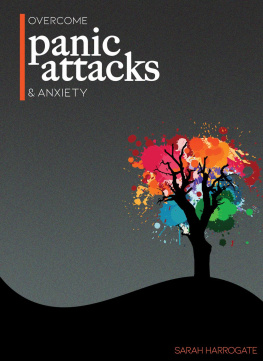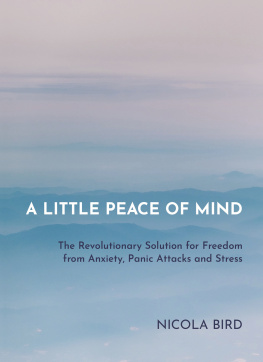If you are my regular reader and are familiar with my previous works, you know that my books are very execution oriented and have zero fluff.
I do not eat up your precious time by going on and on for dozens of pages about the theory and philosophy behind the issue at hand and then leave you high and dry without any actionable instructions.
Rather, my works are chock full of step-by-step techniques, that you can immediately start implementing and practicing within hours of getting my book.
I take pride in this ability of mine to quickly help people in need and want to promise you that this book will be no different.
Introduction
If I have to describe in one line, Anxiety is being an eternal pessimist and thus experiencing all the physical and psychological after-effects of failure in Advance.
Essentially, experiencing any sort of failure in advance in anxiety.
Technically there are 3 aspects to it;
1) Persistent unrealistic worry and tension about failure in everyday things, mostly family and work related causes general anxiety.
2) Fear of failure in interpersonal communications and fear of becoming a subject of embarrassment causes social anxiety and,
3) Panic attack, the most intense form of anxiety where you consistently worry with such intensity that you can no longer function normally and behave like a deer in the headlights. You experience shortness of breath, increased heart rate, profuse sweating and even chest pain as signature physical symptoms.
Anxiety is Good
Genuine anxiety is genuinely good.
When we actually anticipate a possibility of a negative outcome of any particular situation, our body gives out a stress-response. In reaction to it our brain produces hormones and chemical compounds that calm us down and in this process, prepare us for any negative outcome and as a result we dont freak out when it happens and remain in control of the situation and our physical response to it.
The real problem arises when there is a persistent, unrealistic fear of an imagined outcome arising from constant negative thinking, which overwhelms the brain and hampers our bodily functions.
Serotonin, the Savior
When we are under stress and face anxiety, our body produces a chemical called serotonin. (some scientists classify it as a hormone, owing to its role)
This serotonin which acts as a neurotransmitter, is produced in the intestines and in the brain. Its presence in the blood helps in calming down the central nervous system and also the brain.
Lets sprinkle some science
Now that we know the miracle chemical, let us see how it is actively made in the body.
When due to rigorous physical activity in abundance of oxygen, fat is burned in the body leading to increase in the amount of fatty acids in the bloodstream, it in turn increases the blood content of tryptophan.
Tyrptophan which is known to easily break the blood-brain barrier then reaches the brain and there it is converted into serotonin which calms you down and provides a secure sense of safety.
Also, our heart plays an important role too.
Scientists have recently found out that when the heart beats fast due to physical exertion and at that time if there is an abundant presence of oxygen and tryptophan in the blood stream, the muscles of our heart secrete a chemical called as Atrial Natriuretic Peptide (ANP), which mixes with the blood being pumped out, reaches the brain and has a very calming and soothing effect.
Using the brain chemistry to our advantage
Think, if the chemical response to calm down ourselves that our brain generates, can be willfully and tactically induced, how easy our day would be.
That is exactly what I will teach you in the coming pages, with the help of Yogic techniques, tried and tested over millennia.
Imagine, a peculiar sequence of yogic exercises (made up of yoga, mudra and pranayama) practiced daily, early in the morning, which results into slow fat burning throughout the day, thus increasing the fatty acid content of your blood, hence increasing the level of tryptophan, so whenever you find yourself in stressful situations, your body can quickly increase its serotonin production and calm you down. (also, healthy fat loss and a lean physique is a beneficial side-effect.)
Also imagine that you regularly practice such yogic techniques that strengthen your cardio-vascular system, thus having a sufficient supply of ANP in your blood during stressful situations to soothe your senses and emotions and a healthy heart and reduced risk of cardio-vascular diseases like arteriosclerosis is a happy side-effect.
Enough with the prattle, lets get down to the actionable steps.
How to use the techniques you will learn in this book?
In this book I will teach you 22 techniques, they comprise of Yoga postures, Mudras (hand gestures), Pranayama (regulated breathing), Meditation techniques and some unique Ayurvedic elixirs that will bust away your stress for good.
I will also say this; you cannot expect to perform these exercises one time and then expect to be anxiety free forever.
These techniques are essentially micro-exercises, which will work wonders for you when you include them in your daily routine and cultivate them as habits.
Based on the experiences of my clients and students, techniques #1, #4, #7, #10, #13 and #20 are the six most effective techniques.
Hence, practice these 6 techniques daily, and then pick and choose any 2-3 other techniques to go with them, so that you go through all the techniques at least once a week. (Practice the techniques twice per day, once in the morning and then in the evening for best results, also both the time, end your practice with either of the 2 meditations taught.)
Maintain your practice for 4-6 weeks and then you will find out by experience that a few techniques work really well for you more than the others. Then inculcate those techniques as habits in your daily routine.
Mudra
()
What are Mudras?
According to the Vedic culture of ancient India, our entire world is made of the five elements called as The Panch-Maha-Bhutas. The five elements being Earth , Water , Fire , Wind and Space/Vacuum . They are also called the earth element, water element, fire element, wind element and space element.
These five elements constitute the human body the nutrients from the soil (earth) are absorbed by the plants which we consume (thus we survive on the earth element), the blood flowing through own veins represents the water element, the body heat represents the fire element, the oxygen we inhale and the carbon dioxide we exhale represents the wind element and the sinuses we have in our nose and skull represent the space element.
As long as these five elements in our body are balanced and maintain appropriate levels we remain healthy. An imbalance of these elements in the human body leads to a deteriorated health and diseases.
Now understand this, the command and control center of all these five elements lies in our fingers. So literally, our health lies at our fingertips.
The Mudra healing method that I am going to teach you depends on our fingers.
To understand this, we should first know the finger-element relationship:
Thumb Fire element.
Index finger Wind element.
Middle finger Space/Vacuum element.
Third finger Earth element.






![Advait - Mudras for Sex: 25 Simple Hand Gestures for Extreme Erotic Pleasure & Sexual Vitality: [ Kamasutra of Simple Hand Gestures ]](/uploads/posts/book/81294/thumbs/advait-mudras-for-sex-25-simple-hand-gestures.jpg)










